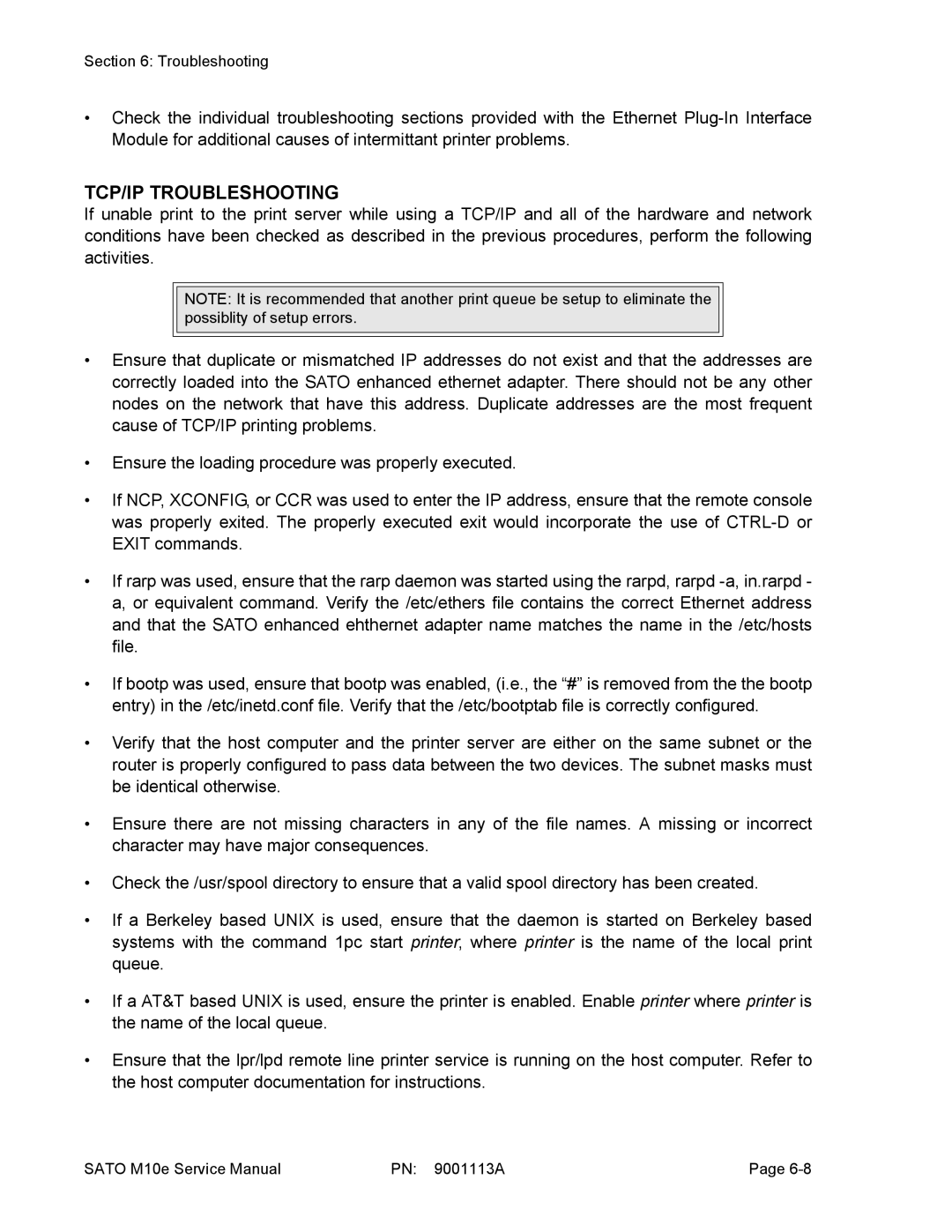Section 6: Troubleshooting
•Check the individual troubleshooting sections provided with the Ethernet
TCP/IP TROUBLESHOOTING
If unable print to the print server while using a TCP/IP and all of the hardware and network conditions have been checked as described in the previous procedures, perform the following activities.
NOTE: It is recommended that another print queue be setup to eliminate the possiblity of setup errors.
•Ensure that duplicate or mismatched IP addresses do not exist and that the addresses are correctly loaded into the SATO enhanced ethernet adapter. There should not be any other nodes on the network that have this address. Duplicate addresses are the most frequent cause of TCP/IP printing problems.
•Ensure the loading procedure was properly executed.
•If NCP, XCONFIG, or CCR was used to enter the IP address, ensure that the remote console was properly exited. The properly executed exit would incorporate the use of
•If rarp was used, ensure that the rarp daemon was started using the rarpd, rarpd
•If bootp was used, ensure that bootp was enabled, (i.e., the “#” is removed from the the bootp entry) in the /etc/inetd.conf file. Verify that the /etc/bootptab file is correctly configured.
•Verify that the host computer and the printer server are either on the same subnet or the router is properly configured to pass data between the two devices. The subnet masks must be identical otherwise.
•Ensure there are not missing characters in any of the file names. A missing or incorrect character may have major consequences.
•Check the /usr/spool directory to ensure that a valid spool directory has been created.
•If a Berkeley based UNIX is used, ensure that the daemon is started on Berkeley based systems with the command 1pc start printer, where printer is the name of the local print queue.
•If a AT&T based UNIX is used, ensure the printer is enabled. Enable printer where printer is the name of the local queue.
•Ensure that the lpr/lpd remote line printer service is running on the host computer. Refer to the host computer documentation for instructions.
SATO M10e Service Manual | PN: 9001113A | Page |
